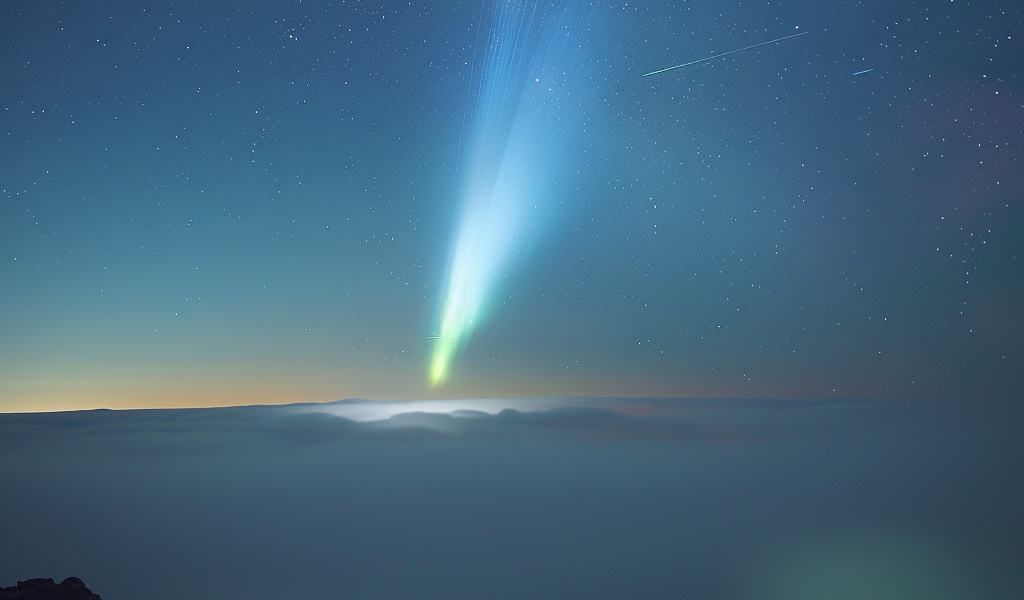Comet 12P, also known as the ‘Devil Comet,’ is currently making its way towards the Sun in preparation for the upcoming total solar eclipse on April 8. This spectacular event, which will be visible in parts of Mexico, the U.S., and Canada, is expected to showcase the comet at its nearest point to the Sun in its 71-year orbit.
Comets, as explained by NASA, are remnants from the formation of our solar system billions of years ago, composed of dust, rocks, and ice. As they approach the Sun, they heat up, creating a glowing atmosphere and forming the iconic bright tail that can extend for millions of miles.
12P, a Halley-type comet discovered in 1812, has recently garnered attention due to its striking visual display. Referred to as the ‘Devil Comet’ last year, it earned this nickname because of its hornlike appearance, which has since faded away. Photographers have been capturing its greenish glowing tail and even a spiral in the sky, showcasing a stunning array of colors.
Norwegian Astrophotographer Jan Erik Vallestad has been diligently documenting the changes in Comet 12P as it approaches perihelion. His composite image of different exposures illustrates the evolution of the comet’s ion tail in blue and the outer coma in green, capturing the glowing gases around the coma in a captivating spiral.
Petr Hralek, from the Institute of Physics in Opava, also recorded the comet’s bright blue tail above a foggy scene in Solvakia, further adding to the visual spectacle.
The approach of Comet 12P towards the Sun is a rare celestial event that promises to captivate sky gazers as it coincides with the upcoming total solar eclipse. With its vibrant display and unique features, the ‘Devil Comet’ is set to offer a breathtaking visual experience for astronomy enthusiasts and the general public alike.





